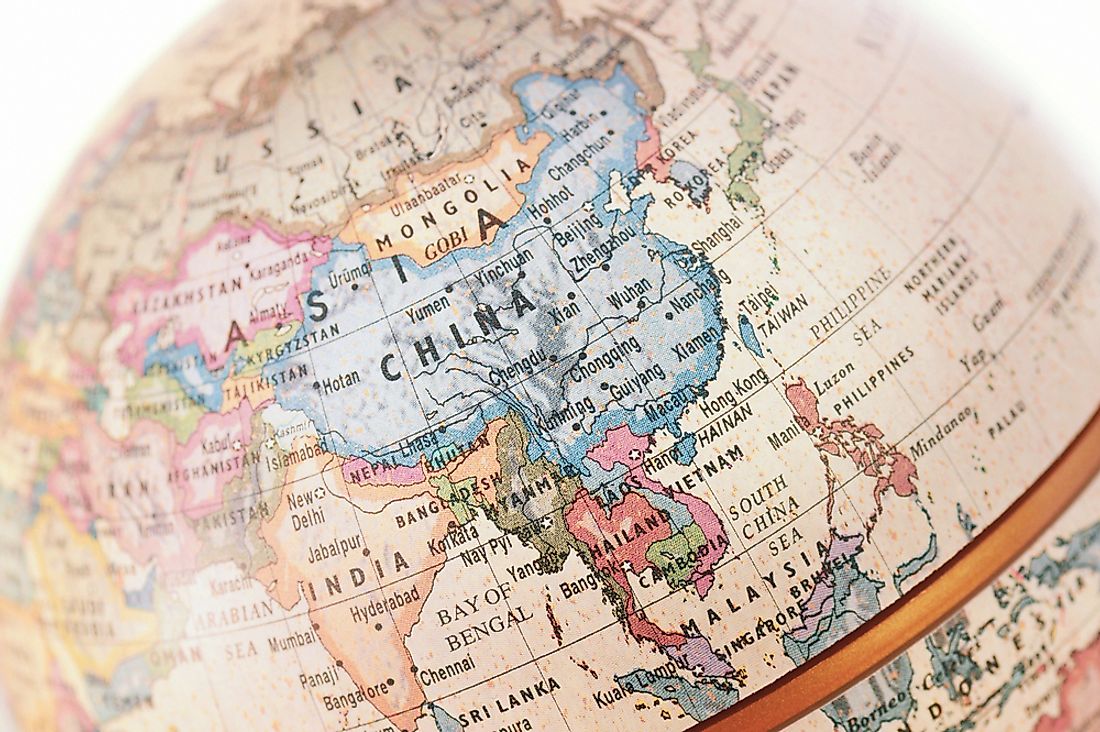What Is The Largest Continent?

Asia ranks as the biggest continent, and it occupies almost 29.1% of the Earth's landmass. The continent extends for 17,139,445 square miles and is home to 4.1 billion people. Some people regard Asia and Europe as being a single continent thus making it the largest by far.
Geography Of The Largest Continent In The World
Asia occupies the eastern area of the Eurasian supercontinent with Europe making up the western portion. Asia borders the Indian, Arctic, and Pacific Oceans and it can be subdivided into deserts, mountain chains, plains, saltwater, and freshwater environments, and plateaus. Asia is home to the 1,550-mile-long Himalaya Mountains which separate the Indian subcontinent from the other parts of Asia. The Himalayas are so long that they are divided into three mountain belts. Other Asian mountain systems include the Tien Shan Mountains and the Ural Mountains. Asia is also home to multiple plateaus including the Tibetan Plateau which is famous as the highest region on Earth. Much of the territory of Iran, Pakistan, and Afghanistan lies on the Iranian Plateau. The most extensive region of continuous flatland lies in Asia and more specifically in Russia called the West Siberian Plain. The largest sand sea also lies in the continent namely the Rub' al Khali Desert. Notable water bodies in Asia include Lake Baikal of Russia, the Yangtze River, the Tigris-Euphrates river system, the Persian Gulf, the Bay of Bengal, and the Sea of Okhotsk.
Economy Of The World's Largest Continent
Asia prides as having the second highest nominal GDP among the world's continents just behind Europe. However, when the GDP is measured by Purchasing power parity Asia has the highest. The largest Asian economies include Japan, South Korea, China, Indonesia, and India. The economies of India and China particularly have been registering annual growth rates of over 8%. Asia has such significant natural resources as silver, petroleum, rice, forests, copper, water, and fish. Asia's manufacturing industry is strong in China, South Korea, Taiwan, the Philippines, Japan, Singapore, and India. The continent's four primary financial hubs are Singapore, Tokyo, Shanghai, and Hong Kong. 3.3 million millionaires lived in Asia in 2010.
Demographics Of Asia
The largest continent is home to an estimated 56% of the world population. India and China together have more than 2.6 billion inhabitants. The Central Asian people include the Mongols, Iranians, Russians, and the Turkic people. Japanese, Koreans, Chinese, and Sino-Tibetan Peoples are categorized as East Asian People. The people of Northern Asia include the Tungusic, Finno-Ugric people, and the native communities of Siberia. The ethnic groups of Pakistan and India are categorized as South Asian people as are the Munda people, Dravidians, and Indo-Aryans. The ethnic groups of Vietnam, Indonesia, the Philippines, Laos, Cambodia as well as the Tai, and Austronesian People are grouped as Southeast Asian people. The West Asian communities include Arabs, Samaritans, Jews, Peoples of the Caucasus, Druze and the ethnic minorities in Iraq and Iran.
Modern Conflicts In Asia
The world's largest continent has had its share of conflicts after the 2nd World War. Sri Lanka, Lebanon, Nepal, Burma, and Syria have experienced civil wars. For nations like Syria, the war is ongoing. A handful of Asian states have gone to war with each other such as Iraq and Iran who fought from 1980 to 1988. India and Pakistan have engaged one another in four wars since British India was partitioned to form Pakistan and India. Other conflicts have engaged more than two nations such as the Arab-Israeli conflicts involving the Arab nations of Egypt, Lebanon, Jordan, Iran, and Syria.











